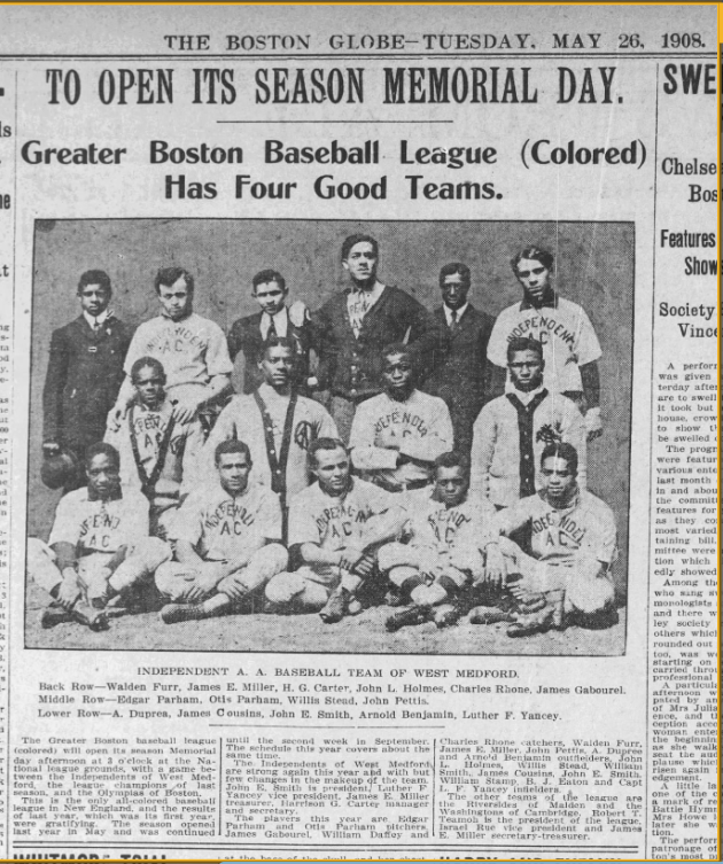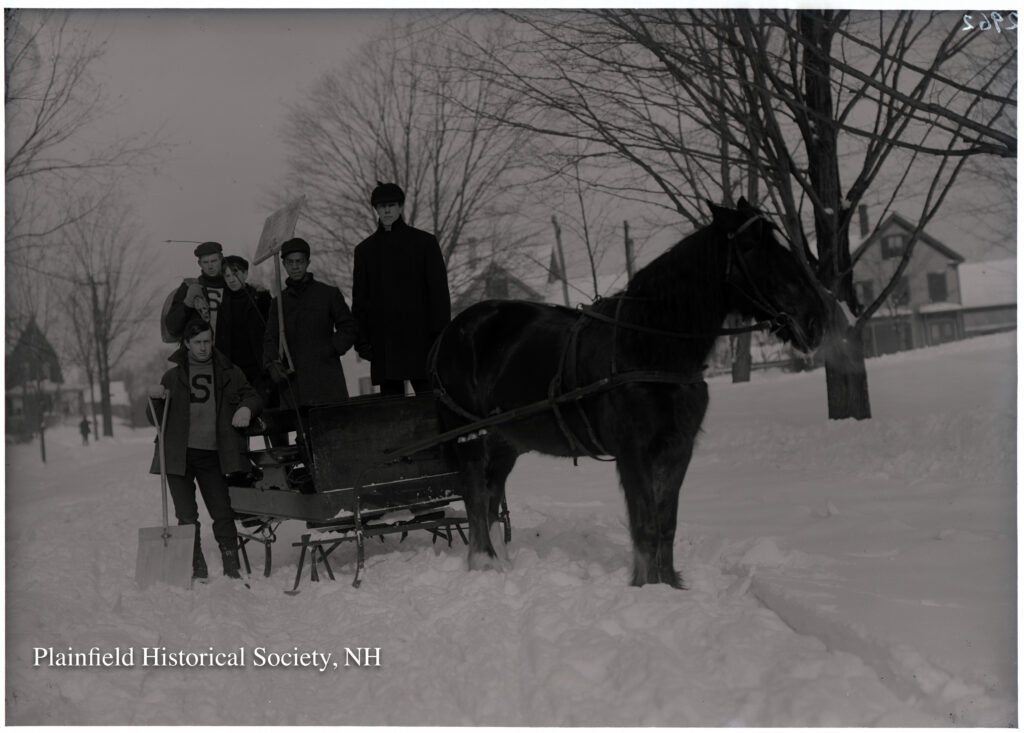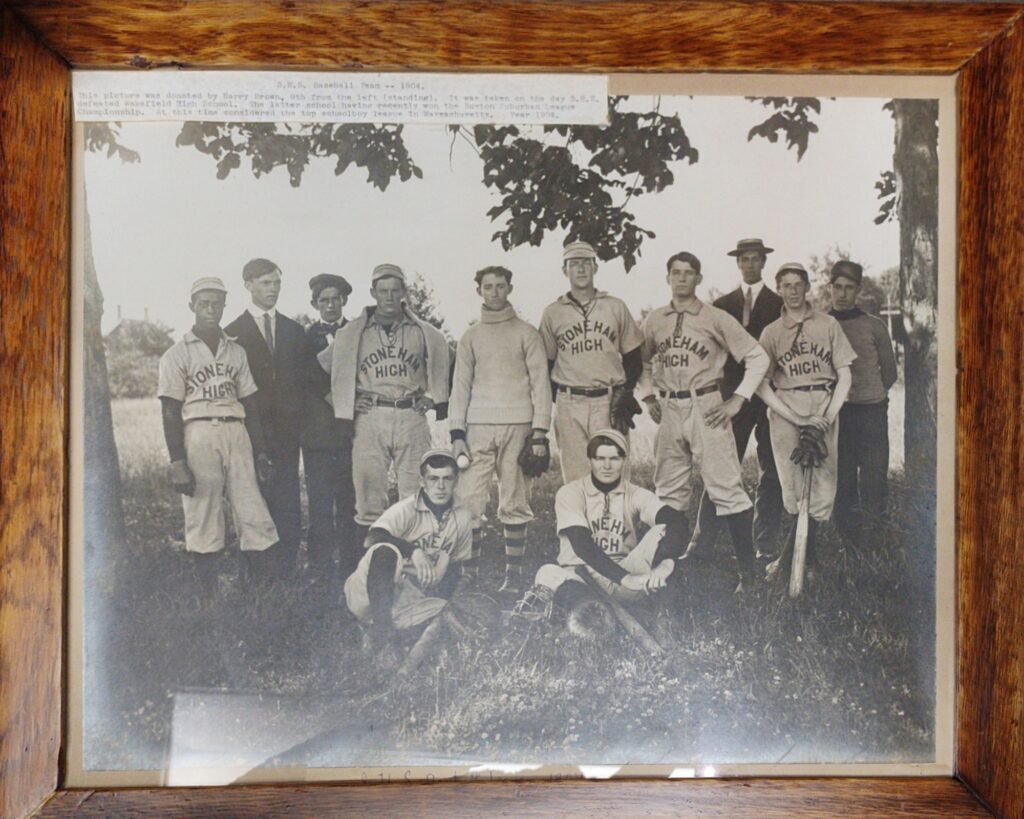Learn about generations of an extraordinary Stoneham family with a host of firsts.
Charles Cephas – US Navy Sailor and Mason
The Story starts with Charles Cephas (1844-1908) – a Virginia man who served as a Landsman in the US Navy during the Civil War on the USS Ohio and the USS Sacremento. It’s not clear if Cephas had been a free Black or escaped slavery before his enlistment.
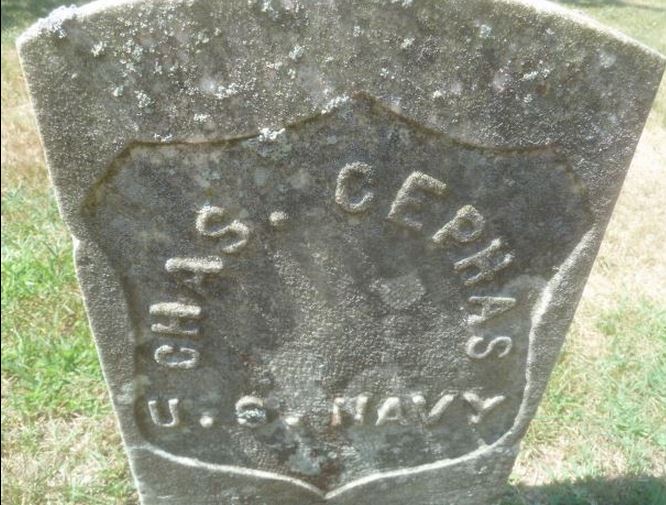
The Sacremento unloaded in Boston after the war and Cephas stayed in the area, moving to Stoneham, where he was married to Sarah Hill in 1867. Several other black families moved here around the same time, Charles Cephas was a teamster and mason and built many walls, wells and foundations in Stoneham.


Although Cephas did well in his chosen profession, he endured more than one bout of discrimination, for example, having a bucket of whitewash dumped on him from the Cogan shoe mill on Main Street as he was passing in 1891. To make matters worse, he was arrested after confronting the culprits at the factory and later fined $5.

Cephas stayed in Stoneham for most of his life and had many descendants who also lived in Stoneham. His sons Ernest (1869-1908) and George (1871-1962), also served in the Navy – Ernest during the Spanish-American war. All are buried in Lindenwood Cemetery along with a large extended family.
His son Louis, narrowly escaped death in 1904 when a streetcar in Melrose hit a box of dynamite that had fallen off a wagon. The resulting explosion killed 9 people and injured dozens more.
Sadly, Charles Cephas died in 1908 after being attacked as he left the Charlestown Navy Yard, where he was picking up his pension check.

George L. Cephas married Carrie Yancey in 1902, uniting the Cephas family with another large family – the Yanceys. George worked in a shoe factory as a bottom finisher, while Carrie was a well-known dressmaker.
Yancey
The Yancey family also hailed from Virginia, where some of Andrew and Mary Yancey’s 17 children were born, with the rest born in Stoneham.

Son John Yancey worked as a shoemaker but was also a talented musician and later led a 10-piece orchestra that played at local events. Both his careers were almost cut short in 1894 when his hand was injured in a accident at the Hamilton Hay shoe factory on Montvale Ave, and subsequently had to have an operation to correct the damage.

Andrew and Mary’s son Robert N, worked as an interior painter and decorator. He married Fannie Reed, from another Virginia family, whose younger brother William L Reed, (pictured) a Stoneham High graduate, was one of the first African-American state representatives in Massachusetts, later serving as executive secretary on the Governor’s Council.
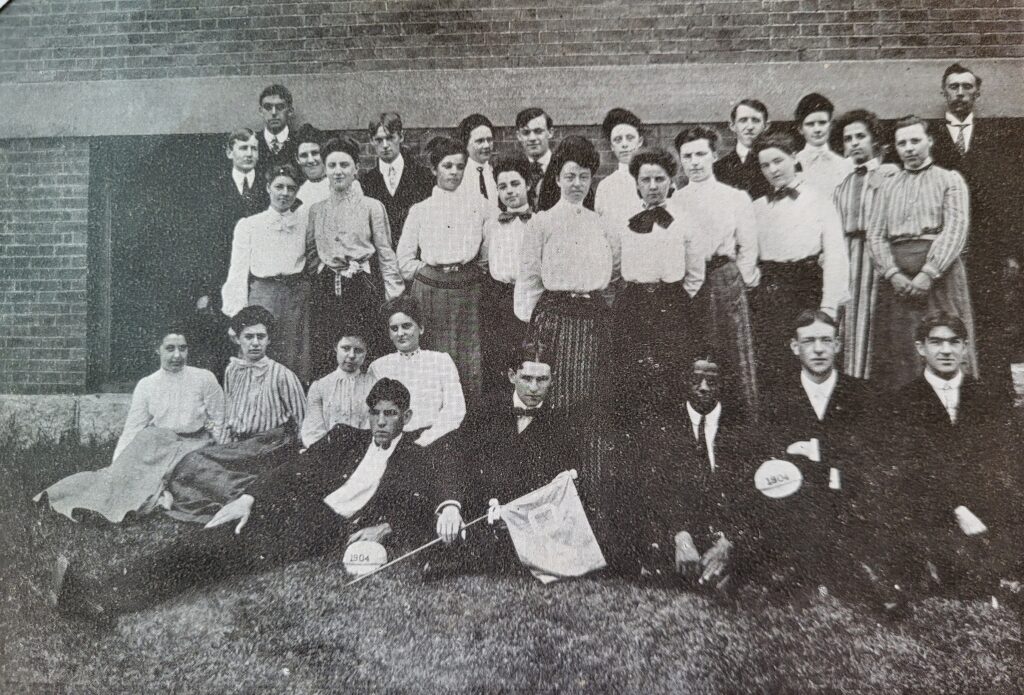
SHS 1904
Robert Yancey’s son Luther, excelled at both school and sports, serving as a Lt in the High School Cadets, graduating 2nd in the class in 1904 and later playing minor league baseball. He later followed his father into the painting business.
Both Pearl Yancey and Bertha Yancey Saunders, sisters of Luther, later worked in the bottling room at the E.L. Patch pharmaceutical company on Montvale Ave. Bertha also later worked as a teacher.

Robert (Bob) Yancey, son of Luther, was a standout basketball player and play for Boston University in the 1930s.
His brother Luther Francis Yancey, Jr., better known as Frank, excelled at art and writing, becoming an editorial cartoonist and – during World War II – a war correspondent.

During WWII, Frank switched from cartoonist for the Afro-American newspaper in Baltimore and traveled for them as a war correspondent, reporting on “tan Yanks,” largely in the Pacific Theater. It was there in 1945 that he interviewed General Douglas MacArthur, Supreme Commander of the US Forces in the South Pacific.
Frank’s brother Robert Yancey was a standout basketball player and played for Boston University in the 1930s.
Later Generations of Yanceys
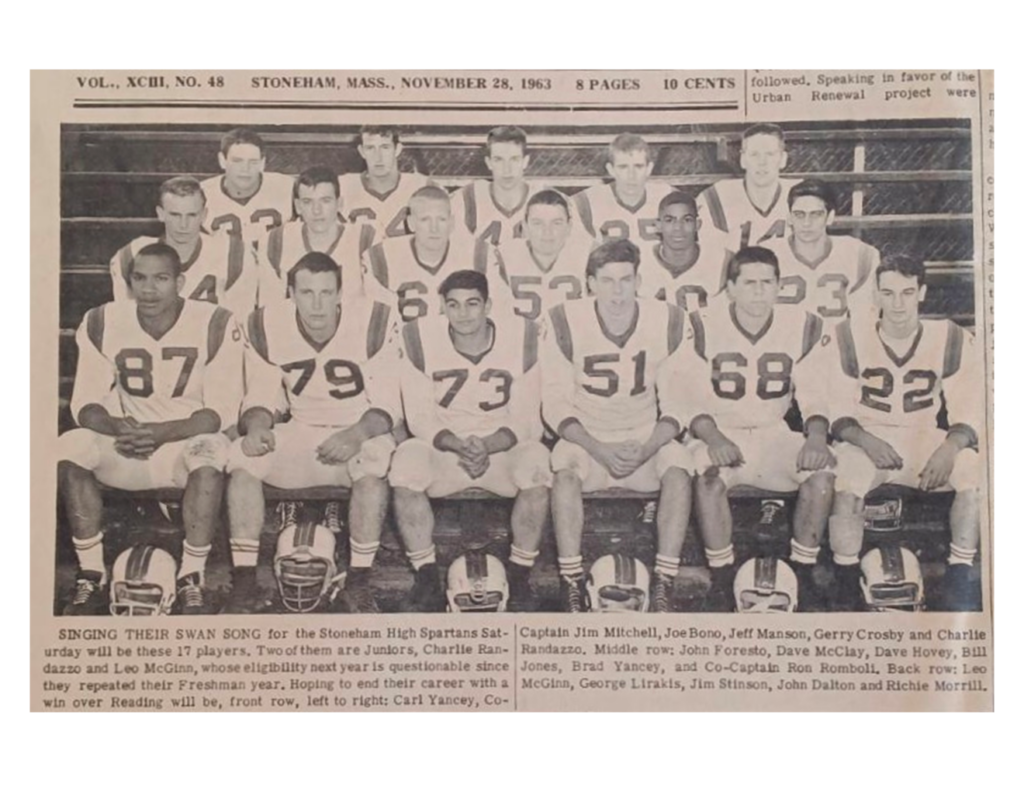

Robert’s sons Robert, Carl and Bradford all played football for Stoneham High School, adding another sport to the family roster. Robert (Class of 1962-pictured in military Uniform) enlisted in the Air Force – and earned a Bronze Star in Vietnam, while Brad (’63) enlisted in the Army.
Carl, who graduated in 1965, later enlisted in the Army and was a Military Policeman in Vietnam, where he also received a Bronze Star. He was later the first active African-American State Trooper in Massachusetts, working for over 30 years and retiring in 2003. He is pictured below in his State Police Uniform.
The Yancey family continues in Stoneham. Brad was a popular coach at Stoneham High School, and Chris Yancey (son of Robert) still coaches there.

After the war
From a 2022 column on Yancey from local author Ben Jacques. “We must not forget our own”
His name was Carl S. Yancey, and he was the first career Black state trooper in the Commonwealth. I learned about him recently from retired Stoneham Police Detective George Sullivan. George is gathering information about Yancey, whom he remembers growing up in Stoneham. George lives on the Cape now, but was happy to talk about Yancey on the phone. Here’s what I found out.
One of four children, Carl grew up in Stoneham, graduating from the High School in 1965. That fall he enrolled at Delaware State University, but left after two years to join the United States Army. Serving as a military policeman in Vietnam, he was awarded the Bronze Star.
If you look on the Vietnam War Memorial beside Town Hall, you will find the names of Carl and his two brothers. Robert, the oldest, enlisted in the Air Force, and Brad went into the Army.
“Carl didn’t need to go,” George said, “but he wanted to do his part. Three sons served in Vietnam and two of them got Bronze Stars. That’s something.”
After Vietnam, Yancey returned to Massachusetts and continued his training at the State Police Academy. Graduating in 1972, he began a 31-year career as a state trooper. While in the State Police, he also served on the Boston Police Anti-Gang Unit. A mentor to others, Yancey was the first secretary of the Massachusetts Minority State Police Officers Association. After retiring, he served on the Emerson College Police force.
In Brockton, Yancey and his first wife, Darhl, raised a family, a son and two daughters. In 2012 he relocated to Charlotte, N.C. After he died in 2018, he was brought home to the McDonald–Finnegan Funeral Home in Stoneham and buried in the Massachusetts National Cemetery in Bourne. He is survived by his second wife, Evelyn, and his two daughters, Leigh and Lauren.
In telling the story of Carl Yancey, George Sullivan is collaborating with Charlie Gardner, a Stoneham friend who also lives on the Cape. A few years behind Yancey, they remember going to Rec Park to watch Yancey, a three-sport athlete, play football there. George and Charlie also played for Stoneham High.
Others in town have memories of Carl or his family, including Jeanne Craigie, who first alerted me to the Yancey story. I also found some interesting quotes in the memorial messages left at the funeral home. Here are three of them.
“Was a member of the 56th Training Troup with Carl,” wrote a fellow trooper. “[I] stood next to him in our first line-up. Carl was a colorful and committed trainee and trooper. Knew him, liked him from day one. Everyone in our class enjoyed Carl and was pulling for him. He was honest, genuine and witty.”
And another: “It is rare to meet in a lifetime a person who is serious yet humorous, wise yet unimposing, dependable yet spontaneous, in many ways unpredictable.”
Another, from an old friend who grew up with Carl: “How I remember walking down the railroad tracks to school every morning with you and your brother Brad. Those were happy times!”
One of only a few African-American families in town, the Yanceys, from what I can gather, found Stoneham a good place to live. Which doesn’t mean there was no prejudice. The decades were turbulent times, and Stoneham wasn’t exempt from age-old attitudes and biases. Two years after Yancey joined the State Police, a federal judge ordered the desegregation of Boston schools. Widespread backlash and hostility followed.
There’s much more to know about Carl Yancey, and I look forward to the discovery work Sullivan and Gardner are doing. In the meantime, as we close out Black History Month of 2022, it’s good to remember that in our search for heroes, we must not forget our own.
Note: The first African American to enter the uniformed division of the Massachusetts State Police was Samuel Range of Jamaica Plain, who entered the police academy in 1956. After graduation, he was told to turn in his uniform, and only after the advocacy of the NAACP and state legislators was he assigned to duty. After a brief period, Range left. He later served with the Boston Police and a sheriff’s police department in California. In 1984 he became director of security for the Lafayette Place in downtown Boston. He died in 2019.

